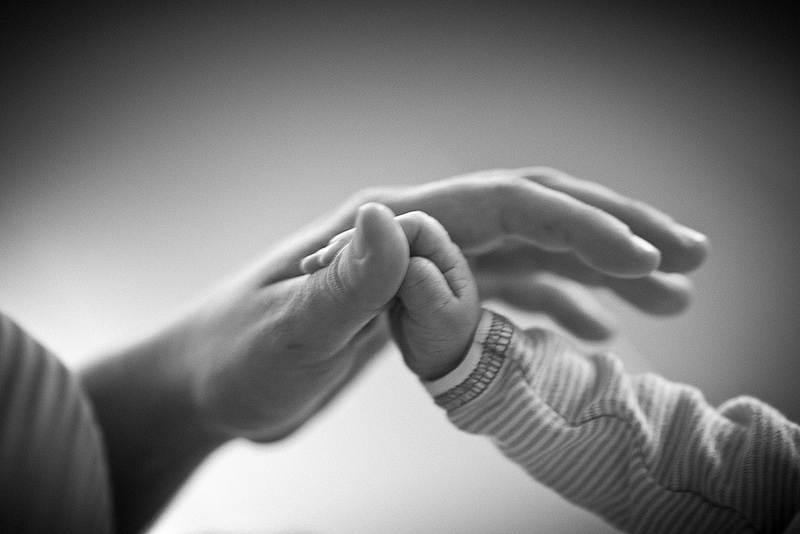How Caregivers Can Create A “Culture of Gentleness”
“Nothing is so strong as gentleness…” -Saint Francis de Sales
What is a “Culture of Gentleness?”
A culture of gentleness means having the ability to put your clients at ease through your actions, words and demeanor. Clients often find themselves in situations that are frightening and cause them stress. Maybe they have received word from their physician that they have a terminal illness. Maybe they have just found out that they will never be able to walk again. They could be facing any number of problems. Creating a culture of gentleness means having the ability to comfort and support them through this difficult time.
In this article, you will be learning many strategies to accomplish this but it must be noted that the desire to create a “culture of gentleness” starts with the heart. You must be able to feel empathy for your client and feel similar emotions that they are going through. You must be able to imagine yourself in their situation. This will help put you in the right frame of mind to help support and care for your client.
It also must be mentioned that as a caregiver, you are not a licensed therapist. You are not there to solve their problems or work toward any type of resolution. However, you do have the right to support your client and help them through difficult situations.
The Foundation for Creating a Culture of Gentleness
The first thing to remember about creating a culture of gentleness is to realize that as a caregiver you are to change yourself not change your client. In a sense you must become like a chameleon and adapt to the needs of your client. They may have certain beliefs, likes/dislikes, interests, etc. The first step in creating a culture of gentleness is establish rapport. You will learn how to do this in more depth below but it starts with the idea that you must be willing to change the way you talk, the way you sit and interact with your client, what you convey out of your eyes, how you use your hands, etc. It takes the ability to “read” your client and adapt in order to support their need to feel safe and valued.
Why Perception is King
One of the most important skills to possess when striving toward creating a culture of genteness is perception. There are two types of perception you must possess:
1. Other-Perception
Remember that creating a culture of gentleness is about helping your client feel safe and valued. In order to do this you need to be aware of things that make them feel safe and valued. This takes a level of perception that requires a focus on your client. You need to watch them and look for their reaction to statements you are making, actions you are taking, etc. Say for instance that your client has just been diagnosed with cancer. She is crying. You tell her not to worry and that you are sure that its not that bad. You then see her furrow her brow at you and say, “You don’t know that!” Since the goal of creating a culture of gentleness is to make them feel safe and valued your statement just had the opposite effect. You client will often tell you, verbally or non-verbally, how they are feeling. Be aware of it.
2. Self-Perception
The second part of perception that is just as important as being able to “read” your client is the ability to be aware of how you are behaving. Often times we are unaware of how our words or actions are affecting other people. It takes the ability to frequently look at yourself and ask the question, “How would this action make me feel if I was in her shoes?” or “If I heard this statement from someone how would it make me feel?” Once you are able to see your own actions and how they are affecting others you can change them in order to get a different response. Over time you will be able to learn and adjust in order to create a safer emotional place for your client.
6 Tools For Creating a Culture of Gentleness
Below you will learn some very effective tools for creating a culture of gentleness. It is essential to repeat here that creating a culture of gentleness goes beyond techniques and tools. If you think that each tool will work in every situation than you will miss the abillity to stay present with your client and perceive what they need at a particular time. However, the below tools help to give a caregiver a starting point. These work generally and are worth memorizing in order to help your client feel safe and valued.
1. When Others Get Louder, We Get Softer
When a client starts to get louder they may be feeling angry. This could be directed toward you or someone else… or life in general. Maybe they are upset by a recent diagnosis or the way a caregiver interacts with them. They could be venting to you and letting their anger take over the conversation. It is helpful in these times to not mirror their anger but to get softer in your speech. You don’t want to soften your speech to the point that it aggravates or annoys them but softening your speech a few notches below what they are at often helps to decrease the amount of anger they are feeling. Of course, if you are working with an elderly client or someone that is hard of hearing, softening your speech to the point that they can’t hear you is not advised. Use this tool with discretion but in general and it can often help create an emotionally safe environment.
2. When Others Get Faster, We Get Slower
This technique is similar to the one above and is often used when an individual starts to feel anxious. Their rate of speech may be increasing as they become more and more anxious. As you talk with them about the challenge that they are going through slow down your speech just a bit. Again, you don’t want to adjust to the point that it is annoying but slowing down your speech when someone is getting angrier can help to calm them down.
3. Conveying Gentleness Through Our Words
Words have tremendous power. When we interact with a client we must choose our words wisely. In the words of Mother Theresa,
“Kind words can be short and easy to speak but their echos are truly endless.”
In order to create a culture of gentleness with your words be kind. Don’t criticize with your words. Use your words to uplift.
4. Conveying Gentleness Through Our Eyes
Here’s a fun activity. Find a friend. Grab a piece of paper and have your friend do it too. Have both of you cover up your face with the piece of paper except your eyes. Now try to guess what emotion you are displaying as you frown, smile, laugh, scowl, etc. You will notice that your eyes speak volumes. If you are sad than your eyes will convey sadness. If you are happy than your eyes will twinkle and convey joy. When you work with your clients try to smile through your eyes. You don’t even need to actually smile. Just pretend like you are smiling and you will smile through your eyes. Your clients will pick up on this and they will feel happier when they are with you. What if you don’t feel happy? That’s ok. Try it anyway. You will notice that the more you do this technique the happier it will even make you feel.
5. Conveying Gentleness Through Our Touch
Our touch has tremendous power. A soft hand on the shoulder of a downtrodden individual can show more love and care than anything else. Likewise, a hand that is rude or not thorough when you are doing range of motion or helping them eat can make an individual feel like they are not cared for or loved. A good caregiver will be aware of how they are using touch to create a culture of gentleness. Remember that you must take into account the fact that each of your clients will have different needs. They may not all react the same way to a hand on the shoulder. It is important to watch for their reactions and adjust accordingly.
6. Conveying Gentleness Through Our Presence
I was once told a powerful story by my nursing professor awhile ago. She was working in a hospital during her clinicals and had the opportunity to work with a woman that was waiting to receive word on a diagnostic that they were performing. The doctor came in while my professor and the patient were in the room and stated that the cancer she had was progressive and she had just a few months to live. The patient was devestated. The doctor left and my professor and the patient were left in the room by themselves. My professor told the class that she had no idea what do say. She had never been in that situation before and didn’t know how to handle it. So she put her hand on the patient’s shoulder and just sat with her. About 20 minutes past while the patient sobbed before any words were exchanged and my professor left the room. A few days later my professor entered the room and the patient told my professor how much she appreciated that she sat down and just sat with her. She said that it comforted her deeply.
Why Presence Is So Powerful
Our presence is powerful. This example shows that our presence can help people tremendously especially when they are going through difficult times. Realize that you often do not need to say anything when someone is struggling through a difficult situation.
Often times you simply need to be present with them as they cry or are angry or vent deep emotions. Be there for them physically.
-Todd



